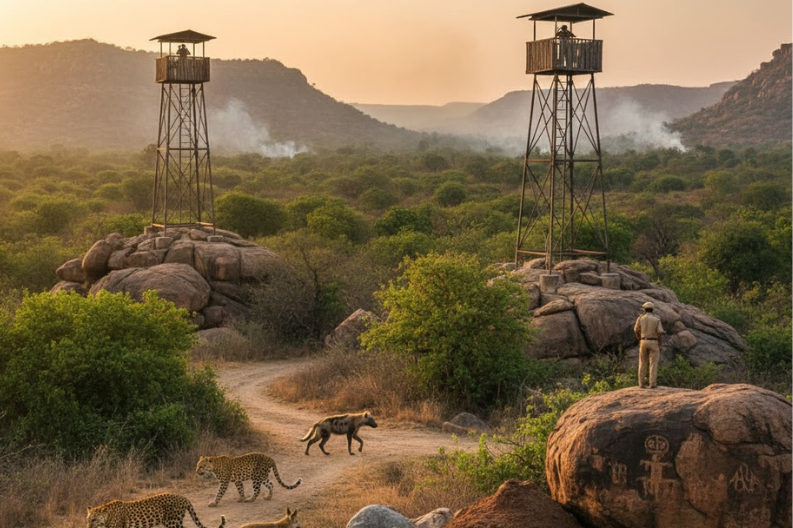Gurgaon’s forest officials have announced an important step to protect the Aravalis, as two new watchtowers to enhance wildlife monitoring will soon rise in the Mangar Bani and Dhauj areas. These towers will stand 40 feet tall and offer teams a clear, elevated view of the landscape. Because the Aravalis face frequent threats, officials believe this move will strengthen on-ground protection in a big way.
The towers will help teams track wildlife movement, detect forest fires during summer, and spot illegal tree cutting or encroachment at an early stage. Moreover, many stretches of the ridge are difficult to patrol on foot, making height-based monitoring extremely useful. Forest officer RK Jangra explained that an elevated view will allow teams to respond faster and prevent damage before it spreads.
Each structure will cost around Rs 5 lakh. The forest department is currently completing approval processes and aims to finish the towers in two to three months. Ecologist Sunil Harsana said the towers will fill major surveillance gaps and support real-time tracking of fires, encroachment, and disturbance. He noted that this simple step will strengthen basic groundwork needed for long-term conservation.
Mangar Bani is especially important because it is the only NCR region that has 30 native Aravali tree species. Its dense forests and rich wildlife make it a sensitive zone. Dhauj, while also rich in wildlife, faces more human interference. Both areas have suffered from illegal cutting and land encroachment for years, which is why increased monitoring is necessary.
Additionally, forest officials have already increased patrols in the region. Their goal is to protect wildlife and maintain the natural balance of the area. Past surveys reveal how rich the Aravalis are. A 2017 assessment recorded 31 leopards, 126 hyenas, 26 jungle cats, 166 jackals, 91 pangolins, and several other species. A survey was done again in 2020, but its results are still awaited.
Beyond wildlife, the Aravali Ridge carries deep historical and archaeological value. These hills have hosted human life for nearly 80,000 years. Ancient rock paintings found in places like Mangar, Dhauj, Silakhari, Damdama, Bhondsi, and others show the region’s prehistoric importance.
Because the Aravalis face pressure from urban expansion, mining, and deforestation, experts say better surveillance is crucial. The watchtowers will support faster responses, data collection on wildlife movement, and improved coordination among forest teams. They will also help prevent fires, which often destroy large areas during harsh summers.
In conclusion, two new watchtowers to enhance wildlife monitoring represent a timely effort to protect one of India’s oldest and most fragile natural landscapes. With stronger monitoring and smarter planning, officials hope to safeguard the Aravalis for future generations.



